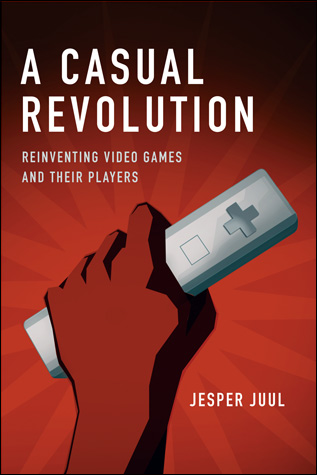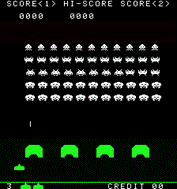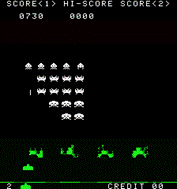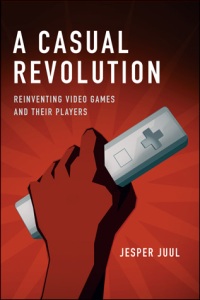
Update November 2009: A Casual Revolution is now out. Read more on the book’s web page: http://www.jesperjuul.net/casualrevolution/
*
Announcing my next book, A Casual Revolution: Reinventing Video Games and Their Players.
Set for release in November 2009, A Casual Revolution is my take on what is happening with video games right now:
- Why is the Nintendo Wii more successful than the Xbox 360 and the PlayStation 3?
- Why and how is the market for video games expanding?
- Who plays Bejeweled, and why?
- What is a casual player? Do casual players even exist?
- What is casual game design?
- Are casual games a throwback to the arcade game, or are they something new?
- How did Solitaire become one of the most popular video games?
- What is the secret behind the success of Guitar Hero and Rock Band?
- Why is Parcheesi a social game? Why is Animal Crossing?
- Does the rise of casual games mean the downfall of the hardcore game?
- … and much more.
I will post more information about the book as we near the publication date!
Official description
The enormous popularity of the Nintendo Wii, Guitar Hero, and smaller games like Bejeweled or Zuma has turned the stereotype of the obsessed young male gamer on its head. Players of these casual games are not required to possess an intimate knowledge of video game history or to devote weeks or months to play. At the same time, many players of casual games show a dedication and skill that is anything but casual. In A Casual Revolution, Jesper Juul describes this as a reinvention of video games, and of our image of video game players, and explores what this tells us about the players, the games, and their interaction.
With this reinvention of video games, the game industry reconnects with a general audience. Many of today’s casual game players once enjoyed Pac-Man, Tetris, and other early games, only to drop out when video games became more time consuming and complex. For a long time, video games asked players to structure their lives to fit the demands of a game; with casual games, it is the game that is designed to fit into the lives of players. These flexible games make it possible for everyone to be a video game player.
Juul shows that it is only by understanding what a game requires of players, what players bring to a game, how the game industry works, and how video games have developed historically that we can understand what makes video games fun and why we choose to play (or not to play) them.
Endorsements
- “An indispensible read for anyone interested or working in the field of video games. Jesper Juul makes sense of the shifting terrain of video game audiences and proves to be one of the finest minds in video games. A ground-breaking book!”
–Sean Baptiste, Manager of Community Development, Harmonix Music Systems
- “A Casual Revolution is a hard look at the unique characteristics of games outside of the hardcore. Juul pushes past the prejudice that casual games are somehow lesser experiences and presents a multifaceted view of ‘casualness,’ casual players and the non-trivial role of these deeply engaging games in our social and cultural lives.”
–Tracy Fullerton, Director, USC Game Innovation Lab, USC School of Cinematic Arts, Interactive Media Division
- “A thoughtful examination of casual gaming. I wouldn’t be surprised to find this book sitting on the shelves of game developers, marketers, and scholars. Juul has combined player ethnography, developer interviews, and informed analysis to produce an exemplary piece of game research.”
–Chaim Gingold, Designer, Spore Creature Creator
Links
Official MIT press page.
Preorder from Amazon .
.



 A Casual Revolution is my take on what is happening with video games right now:
A Casual Revolution is my take on what is happening with video games right now:

